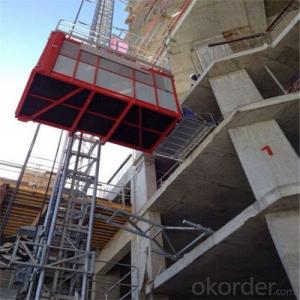Solar Without Inverter
Solar Without Inverter Related Searches
Best Solar Inverter For Home Home Power Inverter For Solar Best Inverter For Solar Pv Best Inverter For Solar Mini Solar Inverter For Home Solar Panel Inverter For Rv Inverter For 5kw Solar System Inverter For Solar Power Plant Inverter For Home Solar Solar Power Inverter For RvHot Searches
Type Of Inverter For Solar Types Of Inverter For Solar Used Solar Inverter For Sale Inverter Size For Solar System Solar Edge Inverter For Sale 5kw Solar Inverter For Sale Solar Inverter For Sale Solar Inverter For Battery Solar Inverter For Split Ac Solar Inverter For Laptop Solar Inverter For Fridge Solar Inverter Supplier In Uae Solar Inverter In Saudi Arabia Solar Inverter In Uae Solar Inverter In Kerala Solar Inverter In Nepal Solar Inverter In Burpengary Solar Inverter In Caboolture Solar Inverter In Chennai Aluminum Foil For SaleSolar Without Inverter Supplier & Manufacturer from China
Okorder.com is a professional Solar Without Inverter supplier & manufacturer, offers integrated one-stop services including real-time quoting and online cargo tracking. We are funded by CNBM Group, a Fortune 500 enterprise and the largest Solar Without Inverter firm in China.Hot Products
FAQ
- The maximum power capacity of a solar inverter can vary depending on the model and specifications, but it is generally in the range of a few kilowatts to several megawatts.
- Yes, there are government incentives available for installing solar inverters. These incentives vary by country and region, but they often include tax credits, grants, or rebates to encourage the adoption of solar energy. Additionally, some governments may offer net metering programs, which allow homeowners to sell excess electricity generated by their solar inverters back to the grid. It is important to research the specific incentives available in your area to take full advantage of the benefits.
- Shading has a significant impact on the performance of a solar inverter. When a solar panel is partially shaded, it reduces the amount of sunlight reaching the cells, leading to a decrease in energy production. This can result in a decrease in overall system efficiency and output. Shading also creates hotspots on the shaded cells, which can damage the panels and reduce their lifespan. To mitigate these effects, advanced solar inverters employ technologies like maximum power point tracking (MPPT) to optimize energy production even in shaded conditions.
- Yes, a solar inverter can be used with a solar-powered healthcare system. A solar inverter is an essential component of a solar power system as it converts the direct current (DC) produced by solar panels into alternating current (AC) that can be used to power various healthcare devices and equipment. This allows for the efficient and reliable operation of a solar-powered healthcare system, ensuring uninterrupted access to essential medical services even in remote or off-grid locations.
- Yes, a solar inverter can be used with solar-powered greenhouse systems. A solar inverter is responsible for converting the DC power produced by solar panels into AC power that can be used to run electrical devices. In the context of a solar-powered greenhouse system, the solar inverter would be essential for converting the solar energy collected by the panels into usable electricity to power various components such as fans, pumps, lighting, and climate control systems within the greenhouse.
- Yes, a solar inverter can be used for three-phase power systems. Three-phase solar inverters are specifically designed to convert the DC power generated by solar panels into AC power for three-phase electrical systems. These inverters are capable of handling higher power loads and are commonly used in commercial and industrial settings where three-phase power is required.
- A solar inverter converts DC power to AC power by utilizing a two-step process. First, it converts the DC power generated by the solar panels into a high-frequency AC current. Then, it uses a transformer to increase the voltage and shape the AC waveform to match the grid's requirements. This process allows the solar energy to be fed into the electrical grid or used directly in homes and businesses.
- A solar inverter is designed to handle voltage drop by continuously monitoring the voltage level of the solar panels. If the voltage drops below a certain threshold, the inverter adjusts its internal electronics to compensate for the drop and ensure a consistent output voltage. This allows the inverter to maintain optimal performance and efficiency even in situations with voltage fluctuations or drops.















































